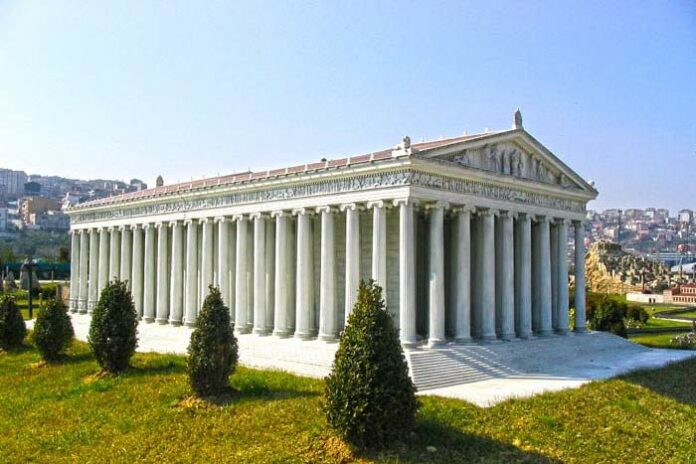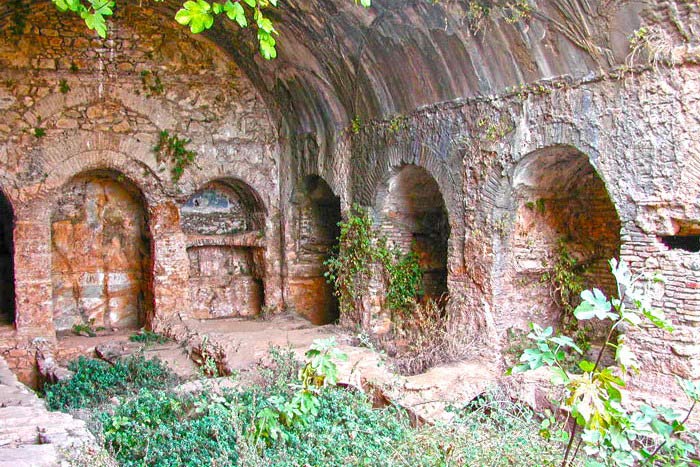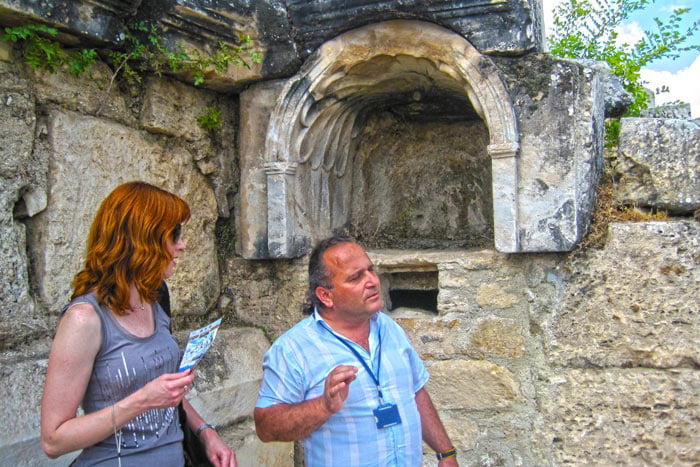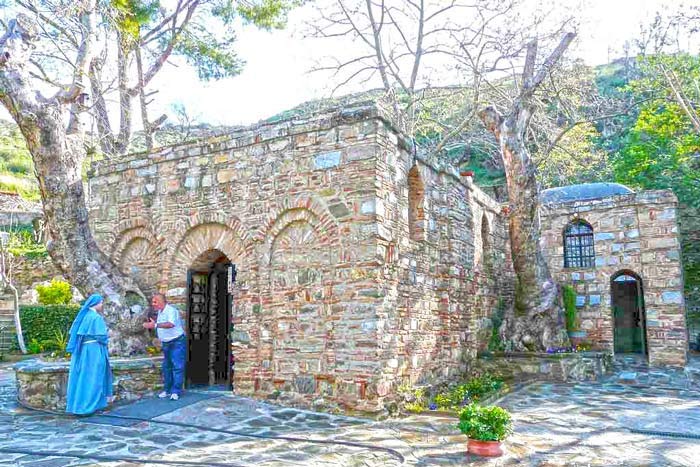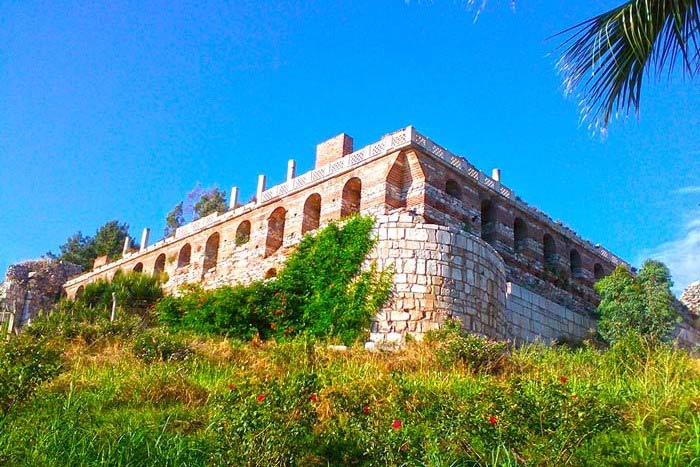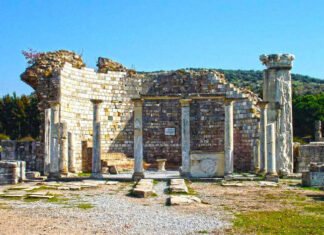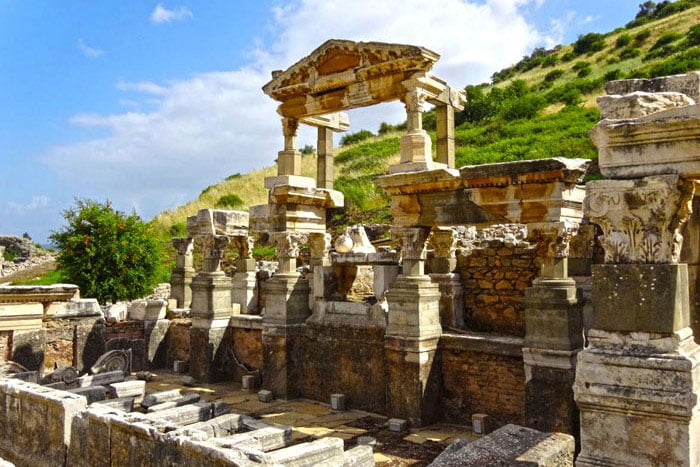Private tour Ephesus – The Shrine to the Goddess Artemis
Private tour Ephesus – The first shrine to the Goddess Artemis was probably built around 800 B.C. on a marshy strip near the river at Ephesus. The Ephesus goddess Artemis, sometimes called Diana, is not quite the same figure as was worshiped in Greece. The Greek Artemis was the goddess of the hunt. The Ephesus Artemis was a goddess of fertility and was often pictured as draped with eggs or multiple breasts, symbols of fertility, from her waist to her shoulders.
That earliest temple contained a sacred stone, probably a meteorite that had “fallen from Jupiter”. The shrine was destroyed and rebuilt several times over the next few hundred years. By 600 B.C.; the city of Ephesus had become a major port of trade and an architect named Chersiphron was engaged to build a new, larger temple. He designed it with high stone columns. Concerned that carts carrying the columns might be mired in the swampy ground around the site, Chersiphron laid the columns on their sides and had them rolled to where they would be erected.
King Croesus of Lydia
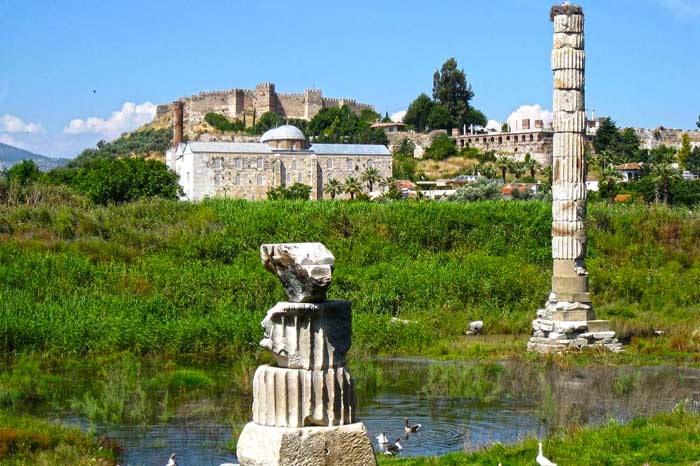
This temple did not last long. According to one story in 550 B.C.; King Croesus of Lydia conquered Ephesus and the other Greek cities of Asia Minor and during the fighting, the temple was destroyed. An archeological examination of the site, however; suggests that a major flood hit the temple site at about the same time and may have been the actual cause of the destruction. In either case; the victorious Croesus proved himself a gracious new ruler by contributing generously to the building of a replacement temple.
This next temple dwarfed those that had come before it. The architect is thought to be a man named Theodorus. Theodorus’s temple was 300 feet in length and 150 feet wide with an area four times the size of the previous temple. More than one hundred stone columns supported a massive roof. One unusual feature of the temple was that a number of columns had bases that were carved with figures in relief.
Private tour Ephesus – One of the column bases with carved figures preserved at the British Museum.
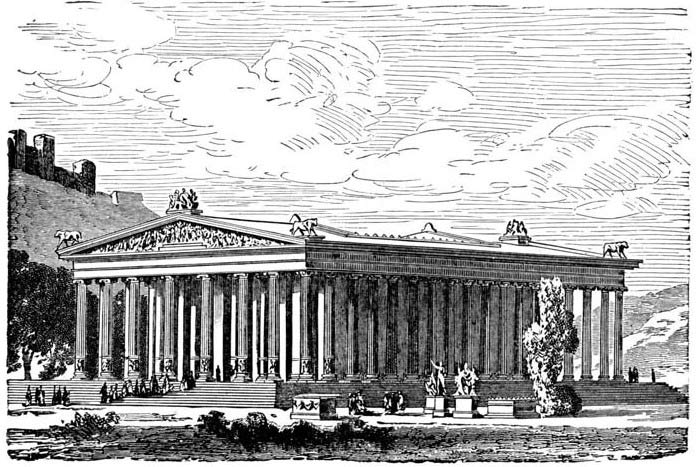
The new temple was the pride of Ephesus until 356 B.C. when tragedy struck. A young Ephesian named Herostratus, who would stop at nothing to have his name go down in history; set fire to the wooden roof of the building. He managed to burn the structure to the ground. The citizens of Ephesus were so appalled by this act that after torturing Herostratus to death; they issued a decree that anyone who even spoke of his name would be put to death.
One of the legends that grew up about the great fire was that the night that the temple burned was the very same night that Alexander the Great was born. According to the story, the goddess Artemis was so preoccupied with Alexander’s safe birth she was unable to save her own temple from its fiery destruction.
Private tour Ephesus – Construction of the Great Temple
Private tour Ephesus – Shortly after the fire, a new temple was commissioned. The architect was Scopas of Paros, one of the most famous sculptors of his day. By this point Ephesus was one of the greatest cities in Asia Minor and no expense was spared in the reconstruction. According to Pliny the Elder, a Roman historian; the new temple was a “wonderful monument of Grecian magnificence, and one that merits our genuine admiration.”
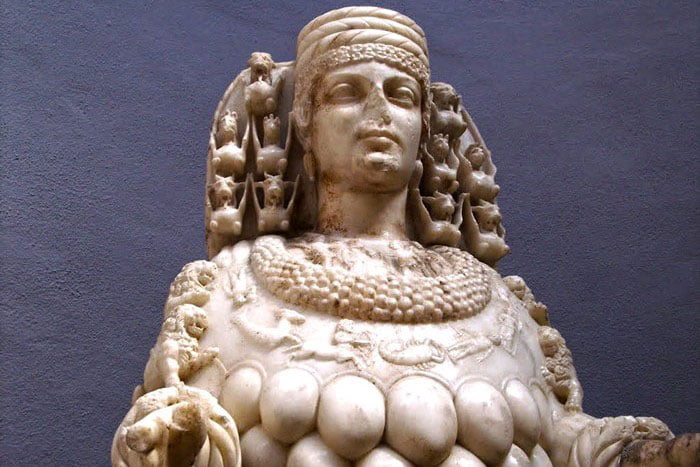
The temple was built in the same wet location as before. To prepare the ground, Pliny recorded that “layers of trodden charcoal were placed beneath, with fleeces covered with wool upon the top of them.” Pliny also noted that one of the reasons the builders kept the temple on its original marshy location was that they reasoned it would help protect the structure from the earthquakes, which plagued the region.
Completely constructed with marble
The great temple is thought to be the first building completely constructed with marble. Like its predecessor, the temple had 36 columns whose lower portions were carved with figures in high relief. The temple also housed many works of art including four bronze statues of Amazon women. The Amazons, according to myth, took refuge at Ephesus from Heracles, the Greek demigod; and founded the city (Private tour Ephesus).
Pliny recorded the length of this new temple at 425 feet and the width at 225 feet. Some 127 columns, 60 feet in height, supported the roof. In comparison the Parthenon; the remains of which still stand on the Acropolis in Athens today, was only 230 feet long; 100 feet wide and had 58 columns.
According to Pliny, construction took 120 years, though some experts suspect it may have only taken half that time. We do know that when Alexander the Great came to Ephesus in 333 B.C., the temple was still under construction. He offered to finance the completion of the temple if the city would credit him as the builder. The city leaders did not want Alexander’s name carved on the temple, but did not want to tell him that. They finally gave the tactful response; “It is not fitting that one god should build a temple for another god” and Alexander did not press the matter.
Heavy stone beams perched
Private tour Ephesus – Pliny reported that earthen ramps were employed to get the heavy stone beams perched on top of the columns. This method seemed to work well until one of the largest beams was put into position above the door. It went down crookedly and the architect could find no way to get it to lie flat. He was beside himself with worry about this until he had a dream one night in which the Goddess herself appeared to him saying that he should not be concerned. She herself had moved the stone into the proper position. The next morning the architect found that the dream was true. During the night, the beam had settled into its proper place.

